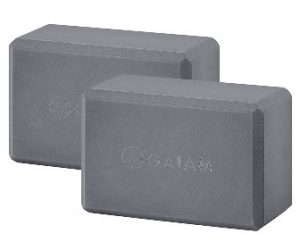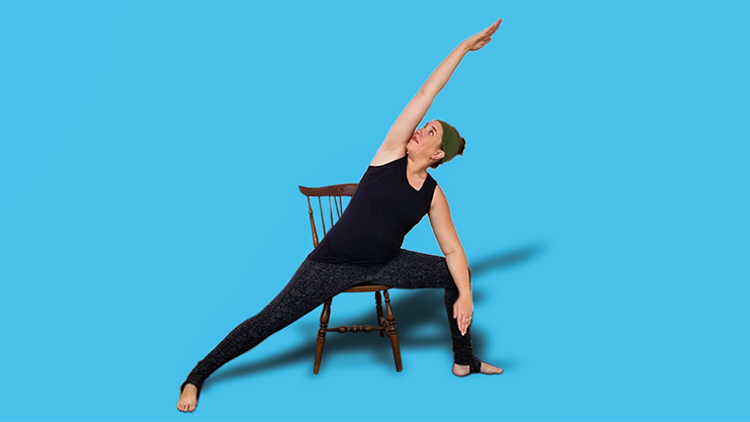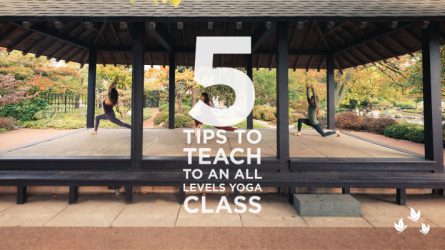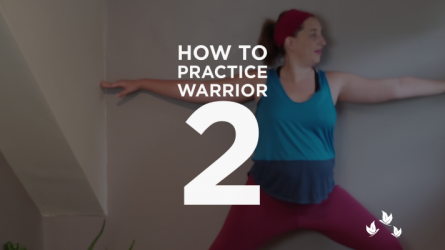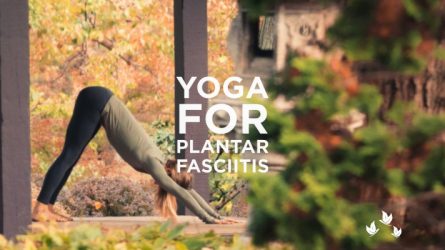Yoga is not a physical practice. It is a practice of understanding the self and controlling the mind that is commonly done through the physical body. However, with the heavy emphasis on advanced yoga asana today, we may have forgotten that it does not matter what body you bring into the practice. For many bodies, the mainstream practice of yoga asana can seem completely unattainable, discouraging them from the path of yoga entirely. This sad situation must be rectified since yoga can help anyone access deeper levels of awareness, peace and joy. Yoga is a path of the mind and spirit that is not dependent on the physical state of the body.
Accessible yoga is a movement that aims to reclaim this path for all bodies who may feel uneasy or unwelcome in a ‘mainstream’ yoga class. Its philosophy is that everyone has a place on the mat to practice asana, philosophy, meditation, pranayama or self-expression. It has become a force for improving the quality of life in people with physical and developmental disabilities, chronic illness, PTSD and mental illness. Accessible yoga programs have been created that cater specifically to elderly people, war veterans, those with vision or hearing impairment, people with larger bodies, amputees, paralysis patients and so on. Another goal of the accessible yoga movement is to make yoga financially accessible to anyone who wants to benefit from it. The practice of yoga should be a right for all human beings to find more peace, love and understanding in their lives.
Benefits of Yoga
Reprograms the nervous system to boost all-round well-being
In yoga asana, we often place our bodies in uncomfortable or painful positions. This triggers our body’s stress response or sympathetic nervous system. Our survival flight-or-fight instinct kicks in and we have the urge to panic to and get out of the asana. But since we are doing yoga, we are asked to breathe deeply and focus on a single point. This gently draws the awareness away from the discomfort and helps us to calm down and surrender to the pose. At this point, the parasympathetic nervous system gets activated. Over time, regular silencing of the stress response and activation of the PNS reprograms our nervous system. Even beyond the mat, when we find ourselves in uncomfortable or stressful situations, we are more likely to be able to take our awareness away from the default panic response to a more centered space. It is this feature of yoga that makes it a potent medicine for stress and anxiety and makes yoga practitioners more tolerant toward pain. The reprogramming of the nervous system helps you break out of harmful behavioral patterns making you more self-confident, optimistic and less prone to addiction.¹
Helps in treating depression and trauma
Yoga boosts serotonin and cortisol levels in the body and inhibits the activity of monoamine oxidase which is an enzyme responsible for breaking down neurotransmitters in the body.²
Protects and heals the body from chronic disease and pain
Yoga provides the perfect balance between muscle flexibility and strength. The openness allows for reduced chronic pain especially in the neck and back. The greater strength prevents the onset of diseases like osteoporosis, arthritis and other chronic conditions.¹
Improves the cardiovascular system
By activating the parasympathetic nervous system, yoga lowers our blood pressure and heart rate. Deep breathing during asana along with pranayama increases oxygen levels in the blood that enhances the function of internal organs and the skin. Improved circulation brought about by Surya Namaskara and inversions lowers the risk of heart disease and cardiac arrest. Twisted asana poses remove stale blood from the internal organs detoxifying and improving their function. Age-related deteriorations in cardiovascular function has been found to be slower in long-term practitioners of yoga than the control group.³
Improves respiratory function
Pranayama is known to improve respiratory circulation leading to better oxygenation and improved muscular strength. Yoga can enhance lung capacity and reverse some of the adverse impacts of smoking and exposure to air pollutants.⁴
Props that Support Accessible Yoga
This post may include affiliate links. Affiliate links provide us a small commission if you make a purchase from the link. Your support helps us making yoga, mindfulness, and stress reduction programs more accessible.
Yoga blocks
Yoga blocks are a perfect way to add stability to the yoga practice. They aid in opening the hips and hamstrings while protecting the practitioner from falls or injury.
Chairs
Every yoga asana can be modified for a chair to make them accessible to those who cannot stand or find it difficult to balance. Chair yoga, if performed mindfully in the presence of a teacher can provide all the same benefits of regular yoga asana in a safe, controlled manner.
Yoga straps
Yoga straps are a great way to add a few inches to the arms to make the floor more accessible. Straps protect the integrity of the pose by allowing the practitioner to align their shoulders and chest in forward folds. They are great tools to assist in improving mobility and flexibility.
Yoga bolsters
Bolsters are wonderful aids in restorative yoga poses like child’s pose and twists. They can also protect the back and joints in backbends and forward folds.
Yoga blankets
Yoga blankets are a great way to protect the knees during poses and bring the ground higher for practitioners who need help balancing in forward fold and backbends. They are also useful in restorative yoga poses to release tension from the neck and upper back.
How to find an instructor that teaches accessible yoga
If you are entering a yoga class with a physical or mental condition, make sure your teacher has a complete understanding of your medical history and is equipped with the appropriate knowledge to support safety in the class. Spend some time understanding how the teacher conducts his or her class and only once you feel completely safe, place your body in their care. There are many types of accessible yoga designed to address different types of body. For instance, there are programs designed exclusively for trauma patients, veterans, amputees, people in wheelchairs and so on. Understand what your body really needs and find an appropriate course or teacher.
Yoga is a journey of deepening awareness. As long as you come to yoga with a sincere desire to learn and experience positive change, you will receive its gifts. The point of yoga is lost when it only becomes a practice available to a few select bodies. Accessible yoga is improving numerous lives by reclaiming the transformative power of this practice and seeing yoga for what it really is – universal.
References
- Woodyard, Catherine. “Exploring the Therapeutic Effects of Yoga and its Ability to Increase Quality of Life.” International Journal of Yoga (2011): 49-54.
- Sengupta, Pallav. “Health Impacts of Yoga and Pranayama: A State-of-the-Art Review.” International Journal of Preventive Medicine (2012): 444-458.
- Harvard Medical School. Yoga – Benefits Beyond the Mat. February 2015. August 2020.
- Yamamoto-Morimoto, Kuniko, et al. “Positive Effects of Yoga on Physical and Respiratory Functions in Healthy Inactive Middle-Aged People.” International Journal of Yoga (2019): 62-67.

